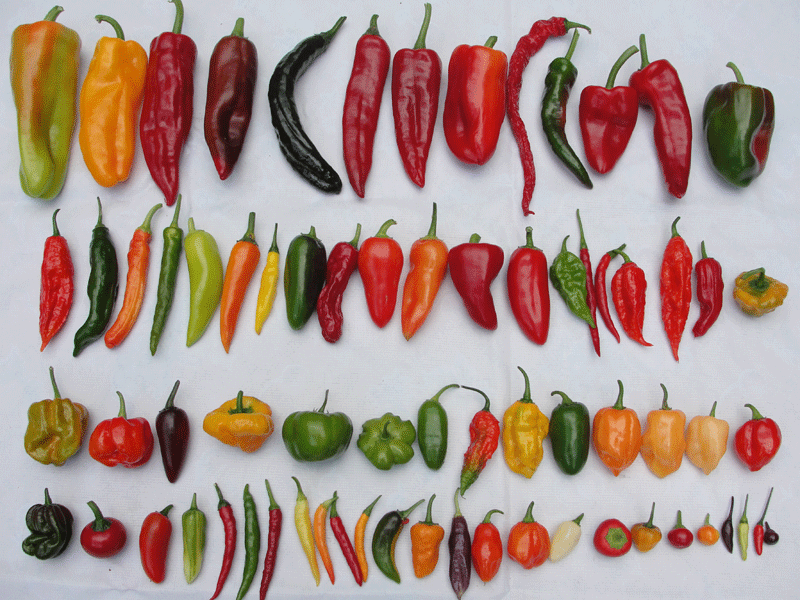 |
| Variety of Fresh Chile Peppers |
Today and tomorrow we will talk about both fresh and dried chiles. The most common or used. The different ranges of heat they offer and how to handle them.
Let's start with naming some of the most popular ones and give a little description of them. They will be in no particular order. You'll note that many of the chiles come in more than one color. The longer they are on the vine causes that change. The heat of the chiles really doesn't change that much because of color. I will show the Scoville scale for each chile. The higher the number means the higher the heat. Each has a range of heat. Each chile can be different in its heat level. That's why you sometimes think a dish hotter than the last time you eat it.
Jalapeno: One of the most popular and known chile peppers. These are great in salsa. They run about 1 1/2 to 2 inches in length and 1/2 to 1 inch in width. You can find them in green or red color. They run 2,500 to 8,000 on the Scoville scale
Serrano: This pepper is slightly hotter than the Jalapeno. Works anywhere you would use the Jalapeno too. It's length is about the same as a Jalapeno but is much thinner. They are green and red in color and run 5,000 to 30,000 on the Scoville scale.
Anaheim: Light green is the color of this chile and one of the mildest of chiles. It can run up to 6 inches in length. The Scoville scale has this one at 500 to 1,000.
Poblano: These chiles are about 3 1/2 inches long and dark green in color. Sometimes called heart shaped, they go about 2 1/2 inches wide. They will turn red as they ripen. These and the Anaheim are used a lot for stuffed peppers (Chile Rellenos). Their Scoville scale is 1,000 to 2,000.
Habanero: This has become a very popular chile in the USA over the last 10 years or so. It is much hotter than the other chiles mentioned already. usually orange in color it comes in at 100,000 to 350,000 on the Scoville scale.
The chiles listed above are all "Fresh" chiles. Below I will list a few "Dried" chiles.
Chipotle: These are red (ripened) Jalapeno chiles that have been dried and smoked. You will find these in cans. They will be in a tomato sauce called "Adobo." It is hot and has lots of flavor. It's listed at the same 2,500 to 8,000 of the fresh Jalapeno but seems to always be spicier.
Ancho: These are dried Poblano chiles and they are reddish in color. If they are black in color, then they're called Mulato chiles. Both are Poblano chiles to start and no one knows why they turn out this way. However, even though they are listed at the same Scoville scale, they seem hotter.
Gaujillo: This is a dried red chile. They are long, tapered an reddish in color. The Gaujillo is used for added heat, some flavor and mostly for color to the finished product it's in. Scoville scale of 2,500 to 5,000.
This has been only a short list of the many chiles grown and used in Mexico. Tomorrow I will continue talking about how to "Roast" fresh chiles, "Re-hydrate" the dried chiles, how to "Handle" chiles while working with them and a few "Tips" regarding chiles.
There will still be two recipes too. One on Thursday for "Chiles Rellenos" and then on Friday for "Salsa Verde with Roasted Tomato."
